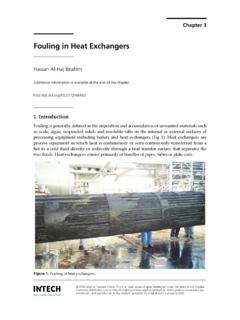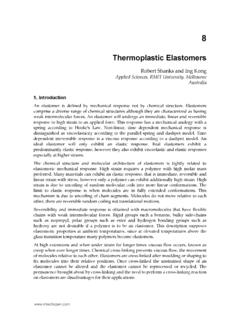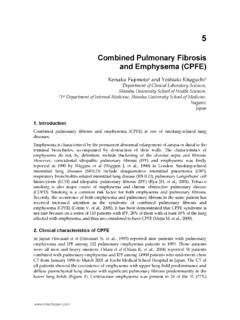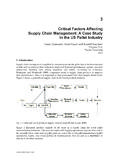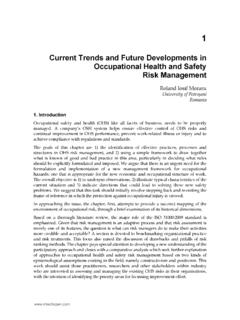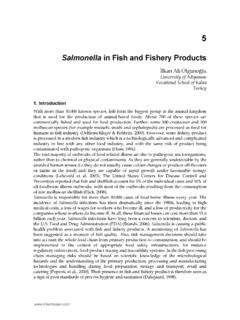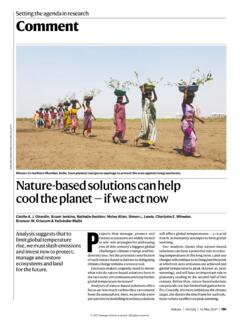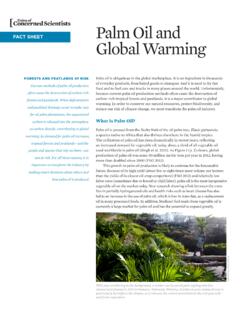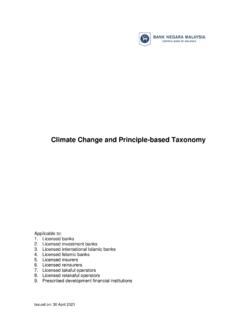Transcription of Deforestation: Causes, Effects and Control Strategies
1 1 Deforestation: Causes, Effects and Control Strategies Sumit Chakravarty1, S. K. Ghosh2, C. P. Suresh2, A. N. Dey1 and Gopal Shukla3 1 Department of Forestry 2 Pomology & Post Harvest Technology, Faculty of Horticulture Uttar Banga Krishi Viswavidyalaya, Pundibari 3 ICAR Research Complex for Eastern Region, Research Center, Plandu Ranchi India 1. Introduction The year 2011 is The International Year of Forests . This designation has generated momentum bringing greater attention to the forests worldwide. Forests cover almost a third of the earth s land surface providing many environmental benefits including a major role in the hydrologic cycle, soil conservation, prevention of climate change and preservation of biodiversity (Sheram, 1993).
2 forest resources can provide long-term national economic benefits. For example, at least 145 countries of the world are currently involved in wood production (Anon., 1994a). Sufficient evidence is available that the whole world is facing an environmental crisis on account of heavy deforestation. For years remorseless destruction of forests has been going on and we have not been able to comprehend the dimension until recently. Nobody knows exactly how much of the world s rainforests have already been destroyed and continue to be razed each year.
3 Data is often imprecise and subject to differing interpretations. However, it is obvious that the area of tropical rainforest is diminishing and the rate of tropical rain forest destruction is escalating worldwide, despite increased environmental activism and awareness. Deforestation is the conversion of forest to an alternative permanent non-forested land use such as agriculture, grazing or urban development (van Kooten and Bulte, 2000). Deforestation is primarily a concern for the developing countries of the tropics (Myers, 1994) as it is shrinking areas of the tropical forests (Barraclough and Ghimire, 2000) causing loss of biodiversity and enhancing the greenhouse effect (Angelsen et al.)
4 , 1999). FAO considers a plantation of trees established primarily for timber production to be forest and therefore does not classify natural forest conversion to plantation as deforestation (but still records it as a loss of natural forests). However, FAO does not consider tree plantations that provide non-timber products to be forest although they do classify rubber plantations as forest . forest degradation occurs when the ecosystem functions of the forest are degraded but where the area remains forested rather cleared (Anon.
5 , 2010). Thirty per cent of the earth s land area or about billion hectares is covered by forests. It was estimated that the original forest cover was approximately six billion hectares (Bryant et Global Perspectives on Sustainable forest Management 4 al., 1997). The Russian Federation, Brazil, Canada, the United States of America and China were the most forest rich countries accounting to 53 per cent of the total forest area of the globe. Another 64 countries having a combined population of two billions was reported to have forest on less than ten per cent of their total land area and unfortunately ten of these countries have no forest at all.
6 Among these countries 16 are such which had relatively substantial forest areas of more 1than one million hectares each and three of these countries namely Chad, the Islamic Republic of Iran and Mongolia each had more than ten million hectares of forest . The forest area remained fairly stable in North and Central America while it expanded in Europe during the past decade. Asian continent especially in India and China due to their large scale afforestation programme in the last decade registered a net gain in forest area. Conversely the South America, Africa and Oceania had registered the net annual loss of forest area (Anon.)
7 , 2010; 2011a). 2. World deforestation According to Professor Norman Myers, one of the foremost authorities on rates of deforestation in tropical forests, the annual destruction rates seems set to accelerate further and could well double in another decade (Myers, 1992). Mostly deforestation has occurred in the temperate and sub-tropical areas. Deforestation is no longer significant in the developed temperate countries now and in fact many temperate countries now are recording increases in forest area (Anon.
8 , 1990a; 2010). In most instances developed nations are located in temperate domains and developing nations in tropical domains. However deforestation was significantly less in tropical moist deciduous forest in 1990-2000 than 1980-1990 but using satellite imagery it was found that FAO overestimated deforestation of tropical rainforests by 23 per cent (Anon., 2001a; b). However the definition of what is and what is not forest remains controversial. The tropical rainforests capture most attention but 60 per cent of the deforestation that occurred in tropical forests during 1990-2010 was in moist deciduous and dry forests.
9 However extensive tropical deforestation is a relatively modern event that gained momentum in the 20th century and particularly in the last half of the 20th century. The FAO FRA 2001 and 2010 reports indicate considerable deforestation in the world during 1990-2010 but this was almost entirely confined to tropical regions (Anon., 2001a; 2010). A summary of deforestation during the decades 1990-2010 is given in tables 1 and 2. These tables show there was considerable deforestation in the world during 1990-2010 but this was almost entirely confined to tropical regions.
10 Rowe et al. (1992) estimated that 15 per cent of the world s forest was converted to other land uses between 1850 and 1980. Deforestation occurred at the rate of million hectares per annum from 1980-1990, 16 million hectares per annum from 1990-2000 and decreased to 13 million hectares per annum from 2000-2010. The net change in forest area during the last decade was estimated at million hectares per year, the loss area equivalent to the size of Costa Rica or 140 km2 of forest per day, was however lesser than that reported during 1990-2000 which was million hectares per year equivalent to a loss of per cent of the remaining forest area each year.
